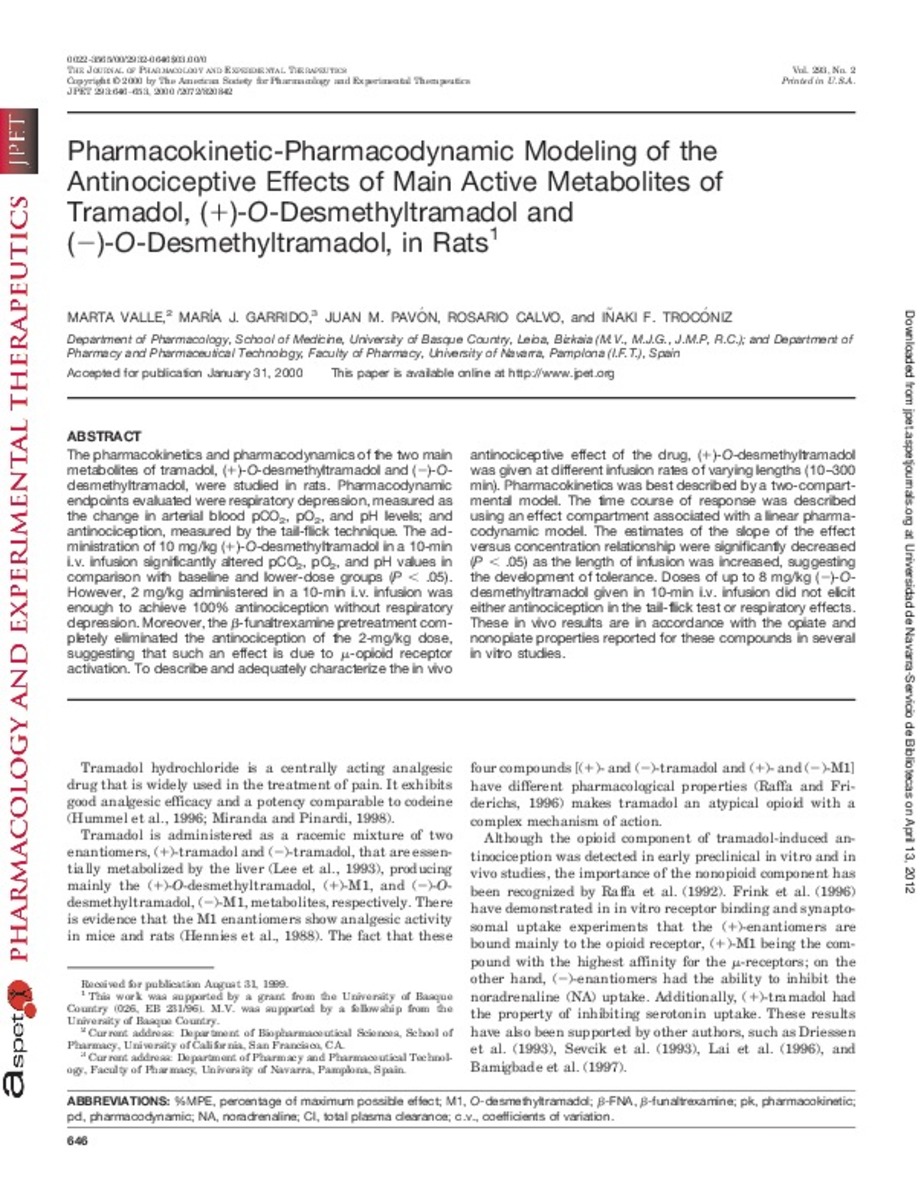Pharmacokinetic-pharmacodynamic modeling of the antinociceptive effects of main active metabolites of tramadol, (+)-O-desmethyltramadol and (-)-O-desmethyltramadol, in rats.
Keywords:
Pharmacokinetics
Pharmacodynamics
Tramadol
Desmethyltramadol
Antinociception
Publisher:
Williams & Wilkins
Citation:
Valle M, Garrido MJ, Pavón JM, Calvo R, Trocóniz IF. Pharmacokinetic-pharmacodynamic modeling of the antinociceptive effects of main active metabolites of tramadol, (+)-O-desmethyltramadol and (-)-O-desmethyltramadol, in rats. J Pharmacol Exp Ther. 2000 May;293(2):646-53.
Statistics and impact
0 citas en

0 citas en

Items in Dadun are protected by copyright, with all rights reserved, unless otherwise indicated.







